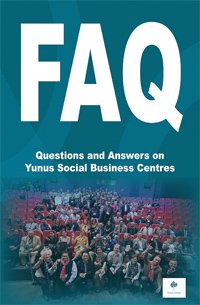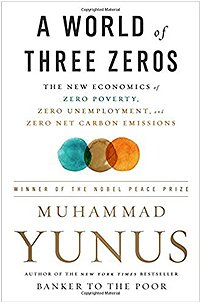Will Bangladeshi-Style Microlending Work in Queens?
The New York Times
City Room
Prof. Muhammad Yunus at the ribbon-cutting ceremony to open the Grameen Bank America. (Photo: Erica Lansner) Enlarge this image.
Wall Street may well be a global center of finance, with billions of dollars in capital flowing back and forth each day. But only 10 miles away, in Jackson Heights, Queens, a more modest banking infrastructure it taking a different approach.
Grameen Bank pioneered the concept of giving microloans to third-world recipients. And Grameen America, which opened its first American outpost in early January, hopes to import its business model from Bangladesh to Queens. But will this brand of lending catch on in one of the most advanced economies in the world?
What makes the Grameen model unusual among other microfinance organizations is that it requires borrowers to meet weekly in small groups. It is here they gather to pay off debt, develop entrepreneurial savvy and hone their money management skills.
So far, 175 borrowers have received loans that range from $500 to $3,000.
Grameen America has smartly situated itself in Jackson Heights, which teems with new immigrants.
"Bangladeshis, Indians, Latinos will follow it, but I don't know about others," said Saiful Islam, a microfinance expert who works in leading network. He doubted whether the group model is well suited for the American market.
"Grameen has to keep in mind how they make their model flexible enough to adapt in a multicultural society," he said.
A common misconception is that microfinancing is meant to help the poorest of the poor. "It's actually supposed to help those below a certain poverty line who are looking for self-employment as a route out of poverty," explained Raj Desai, a fellow at the Brookings Institution and a professor at Georgetown University.
Many see Grameen America's role as fitting a particular niche. "Grameen has the potential to replace the predatory banking the immigrant communities face," Mr. Desai said, "though I'm not sure I see much success outside of immigrant communities in urban areas."
Muhummad Yunus, who, along with Grameen Bank, received the Nobel Peace Prize, is no stranger to naysayers.
Whether in Bangladesh or Queens, he is widely recognized wherever he goes. As was the case in Jackson Heights last Friday, when Mr. Yunus attended a ribbon-cutting ceremony at Grameen Bank America's new headquarters.
"It was like being with Mick Jagger, without the security detail," said Ritu Chattree, vice president of finance and development at Grameen America.
Revelers made their way up 74th Street from Grameen's headquarters to Delhi Palace, an Indian restaurant, where samosas were served alongside empanadas, brought in just for the occasion.
For many of the borrowers, it was their first chance to see Mr. Yunus — a man who has become nearly a mythic figure to them — in flesh and blood.
Ms. Chattree described the chaos as akin to a rugby match, when the ball disappears under a scrum of players. The ball, in this case, being Mr. Yunus.
Over the next year, all eyes in the domestic microfinance world are on Grameen to see whether it can attain the level of success in the United States that it has achieved in the developing world.
"Is it a good thing they're here? Yes, it's a powerful thing to say the poor are bankable," said the economist Jonathan Morduch, who teaches at New York University's Wagner Graduate School. "But ultimately in America, the biggest holes are serving working Americans. A lot are not in situations where group lending makes sense."


